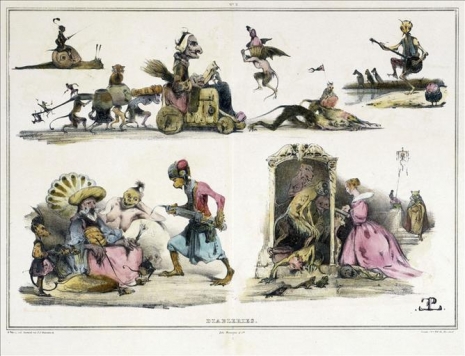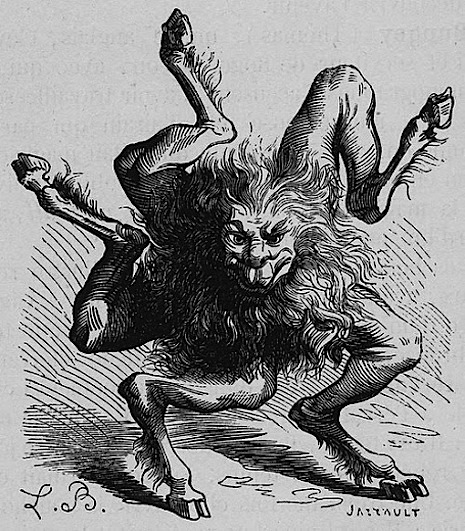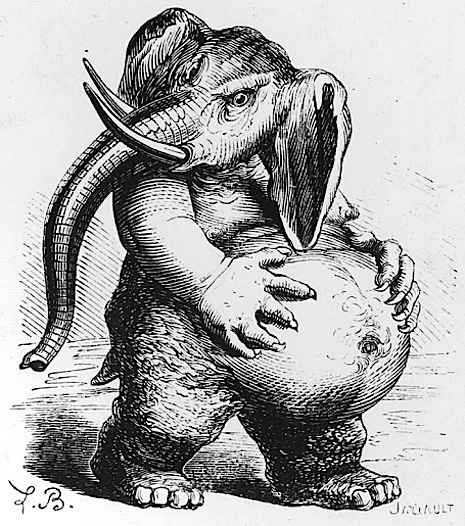
An image of a restored illustration from Eugène Modeste Edmond Le Poitevin ‘Les Diables de Lithographies.’
You might think that I’ve finally gone crazy after reading the title of this post, but you’d be wrong. I’ve been slightly crazy for quite a while—mostly due to the occupational hazards of my “job” here at Dangerous Minds which occasionally expose my eyes to such things as illustrations depicting disembodied flying vaginas. But I’m okay with that, especially since we can all write off this experience as “educational” due to the historical relevance of the vintage illustrations in this post.
In 1832, French painter and Lithographer Eugène Modeste Edmond Le Poitevin published Les Diables de Lithographies—a collection of 80 illustrations on twelve different lithograph plates. A short time later that same year Le Poitevin would put out fourteen more lithograph plates containing 115 additional illustrations for Les Diables de Lithographies. The images are as diabolical as they come and would bring Le Poitevin his greatest success as an artist. His illustrations of Satan showing off his huge penis, or perhaps carting it around in a wheel barrel was quite the departure for the artist who was known for his paintings comprised primarily of landscapes, marine life, sailors, and fishermen.
At the time of Les Diableries de Lithographies’ publication, the city of Paris was in upheaval. In June of 1832, an event referred to as the “June Rebellion” (aka the “Paris Uprising” which writer Victor Hugo in part based his 1862 novel Les Misérables on) was initiated by rebels opposing the liberal-minded monarchy of Louis Philippe I. Philippe I came to power in 1830 after Charles X was forced to abdicate his position as King. French Republicans were pissed. But that was nothing compared to other dire issues in Paris such as the horrific eruption of cholera that killed over eighteen thousand residents of the city (primarily poor people, of course) and another hundred thousand who resided outside the city. Word on the street was that the government was poisoning the water wells.
Despite the all the dead bodies and rumors of poison water, Le Poitevin’s Les Diables de Lithographies was incredibly popular which led to a demand for more from his adoring fans. The artist would respond with several other fiendish publications such as Les diableries érotiques, Petits sujets des diableries, Bizarreries diaboliques, and Encore des Diableries. I’ve included images from both Les Diables de Lithographies and Les diableries érotiques by Le Poitevin below which are without question, very NSFW.


More after the jump…










